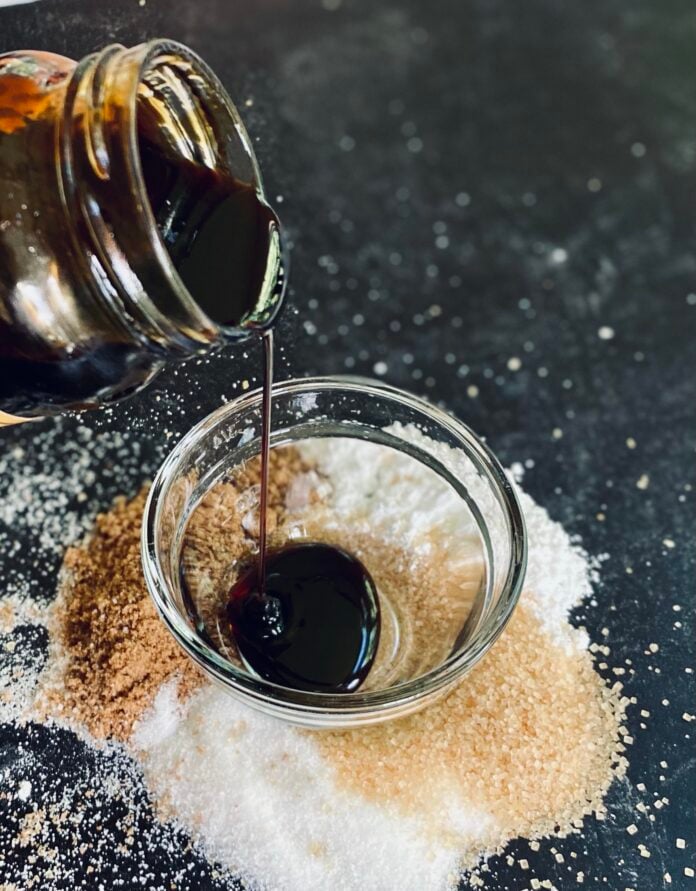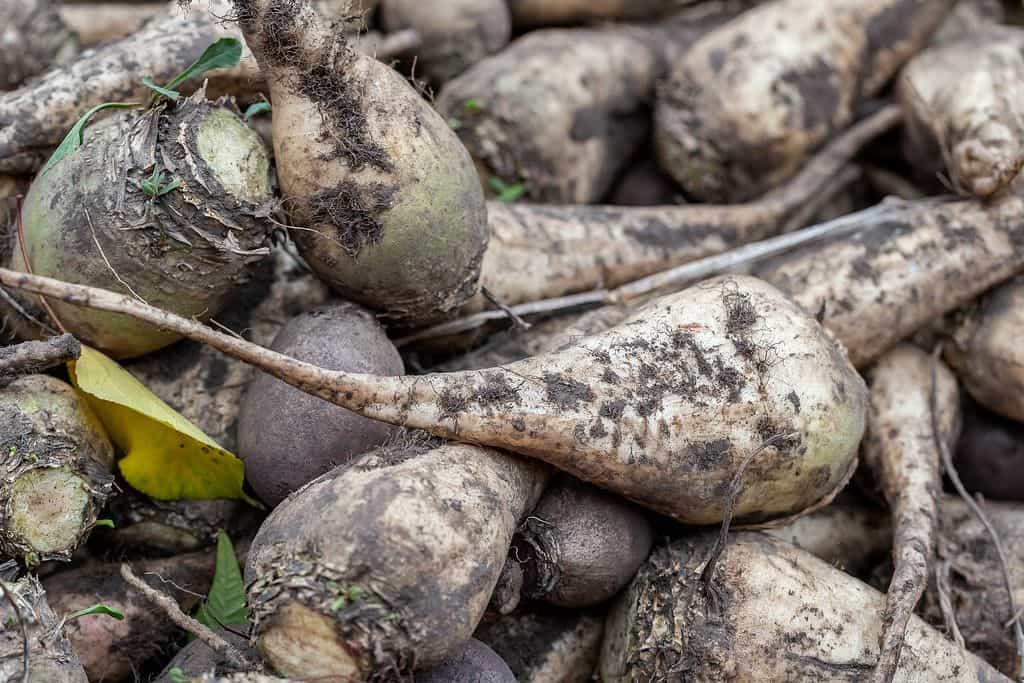Hi Friends! Have you ever looked at sugar–I mean, really looked at it–and wondered what it is? Have you ever wondered why you need to use so much of it in your baked goods, if its only purpose is to make things sweet?
Spoiler alert: it’s not just there to make things sweet!
Want to know more? Read on!
In This Post:
- Where Do We Get Sugar?
- Sugar’s Impact on Baking: It’s Not Just About Sweetness
- Common Types of Sugar for Home Baking
- Wrap Up
- Epilogue: A Note on the History of Sugarcane
Where Do We Get Sugar?
I bet that many of you are familiar with the fact that sugar comes from sugarcane. Sugarcane is a type of thick, fibrous grass that grows up to 20 feet tall. The inside of that fibrous grass contains sucrose, which is the essential element for any kind of sugar, from granulated sugar to natural sugar to sanding sugar.
In the United States, sugarcane is typically grown in parts of Louisiana, Florida, Texas, and Hawaii.
Some of you might also know that sugar can also come from sugar beets! As in, beets the vegetable.
So, sugar is a vegetable. You’re welcome.
{Sadly, sugar is not a vegetable}
Sugar beets are grown in parts of Wyoming, California, Colorado, Montana, Michigan, Nebraska, North Dakota, and Minnesota.
Cane sugar and beet sugar are nearly identical in their makeup, and there’s no difference in taste or texture. In fact, depending on which brand you buy, you might already be using them interchangeably in your kitchen! Popular brands of cane sugar are Domino, C&H, and Sugar in the Raw. Popular brands of beet sugar are GW and Pioneer.
Both sugar beets and sugarcane are inedible when they’re raw (although sucking on sugarcane is a popular pasttime). Sugar from both of these sources has to be refined into its final form. By the time they reach that final form, one is indistinguishable from the other!
Sugar’s Impact on Baking: It’s Not Just About the Sweetness!
It’s common to believe that sugar only impacts the sweetness level in your baked goods.
While that’s a common belief, it’s not quite accurate. It is true that sugar impacts the sweetness level of your baked goods, but it also impacts so much more! For instance:
- Sugar helps baked goods retain moisture. This happens because sugar bonds with liquid in the recipe and retains that liquid. That bond helps keep baked good more moist (I know) for a longer period of time, increasing the shelf life of your baked goods! You can also brush simple syrup (sugar + water) on cakes to help with this as well!
- Sugar keeps your baked goods from getting too tough. Remember when we talked about how gluten bonds form when flour meets water? Well, sugar weakens that bond just a bit and gives your baked goods a more tender crumb (texture). So, instead of a cake that has the structure of a loaf of bread, sugar helps you make cake that has the structure of…cake.
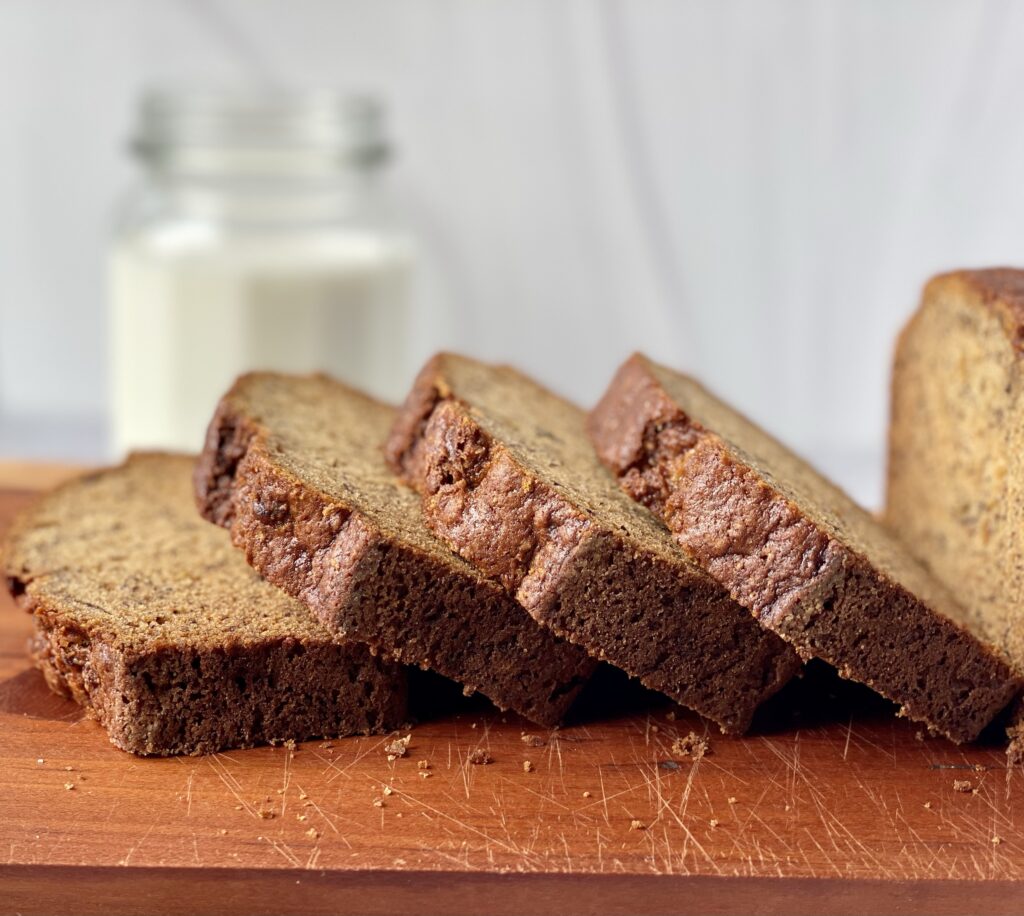
- Sugar + fat = air! Sugar aids in the leavening process for baked goods that use the creaming method. When you combine sugar and fat (usually butter or vegetable shortening) at high speed for about 3-5 minutes, the friction creates little pockets of air for your leavening to get nice and cozy in. Without sugar, this reaction cannot happen.
- Sugar carmelizes and helps your baked goods brown. The amount of sugar impacts how beautifully golden brown your baked goods will get. This is a matter of taste, but if you like your pound cakes to be a deep golden color, then sugar is going to play a huge part!
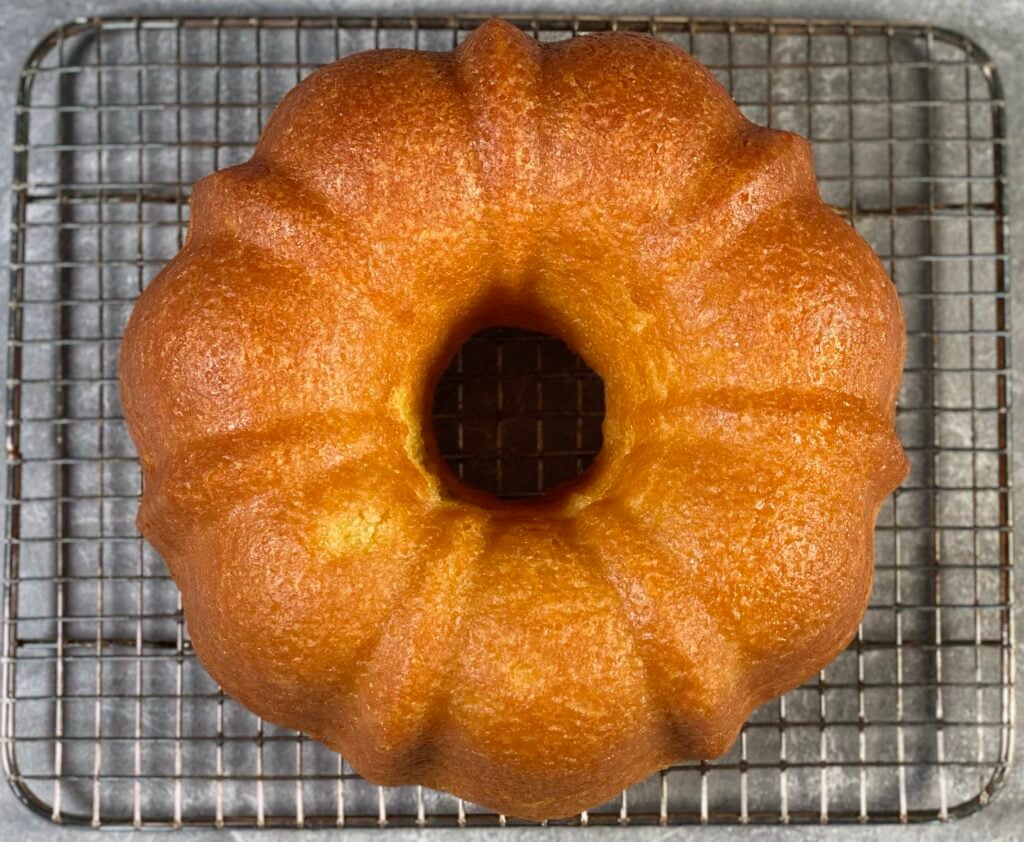
- Sugar helps stabilize egg whites. Whipping egg whites for pancakes? Need them to stay stiff for a few more minutes? Add a little bit of sugar to help keep those egg whites stable and firm so that they don’t flop while you’re starting breakfast bacon. To do this, add a couple of teaspoons of superfine sugar to two egg whites after about a minute of beating. The result will be a more glossy, stable egg white! Note: this is the technique (but not the recipe) for making meringue! So look at you and your fancy skills!
- Sugar feeds yeast. In your bread recipes, yeast needs sugar and liquid to activate. Without sugar, yeast cannot reach its full potential. And don’t we want our ingredients to flourish?
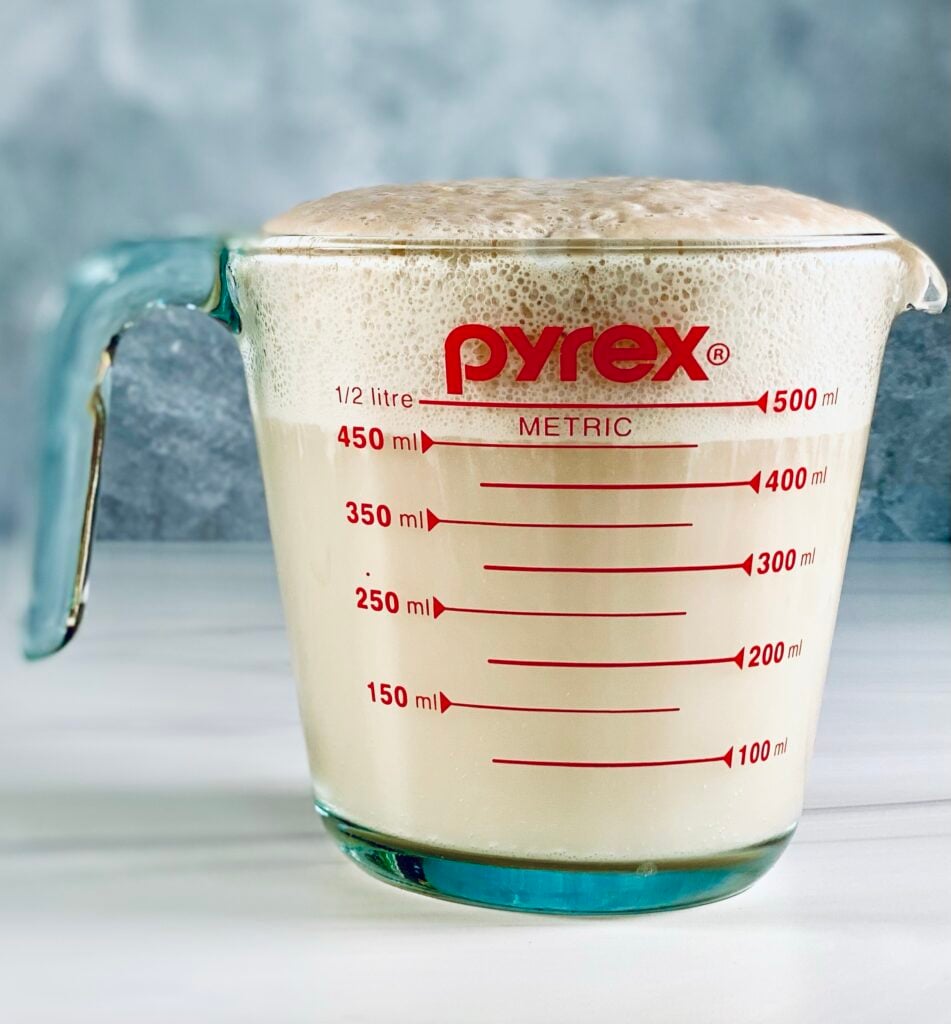
- Sugar slows things down. Have you ever wondered why the eggs in your custards and curds don’t immediately scramble when you add them? The sugar in those custards and curds slows down the cooking (or “coagulation”) process of those eggs, allowing them to blend slowly and avoid scrambling. You still have to add those eggs slowly though! It’s all about the “temper”ament! (Couldn’t help myself.)
Common Types of Sugar for Home Baking
Friends. There are so many types of sugar. It’s not just about granulated sugar any more! Keep in mind, these are the sugars that I keep in my kitchen. As you go on your baking journey, you’ll find your own favorites!
White Sugars
First, there is granulated sugar. It’s the most common form of sugar that’s used in home baking recipes. If a recipe doesn’t specifically say to use another sugar, then granulated sugar is the way to go. When a recipe calls for you to cream butter and sugar together, granulated sugar mixes into the butter and actually increases the volume of the butter. Hello there, air!

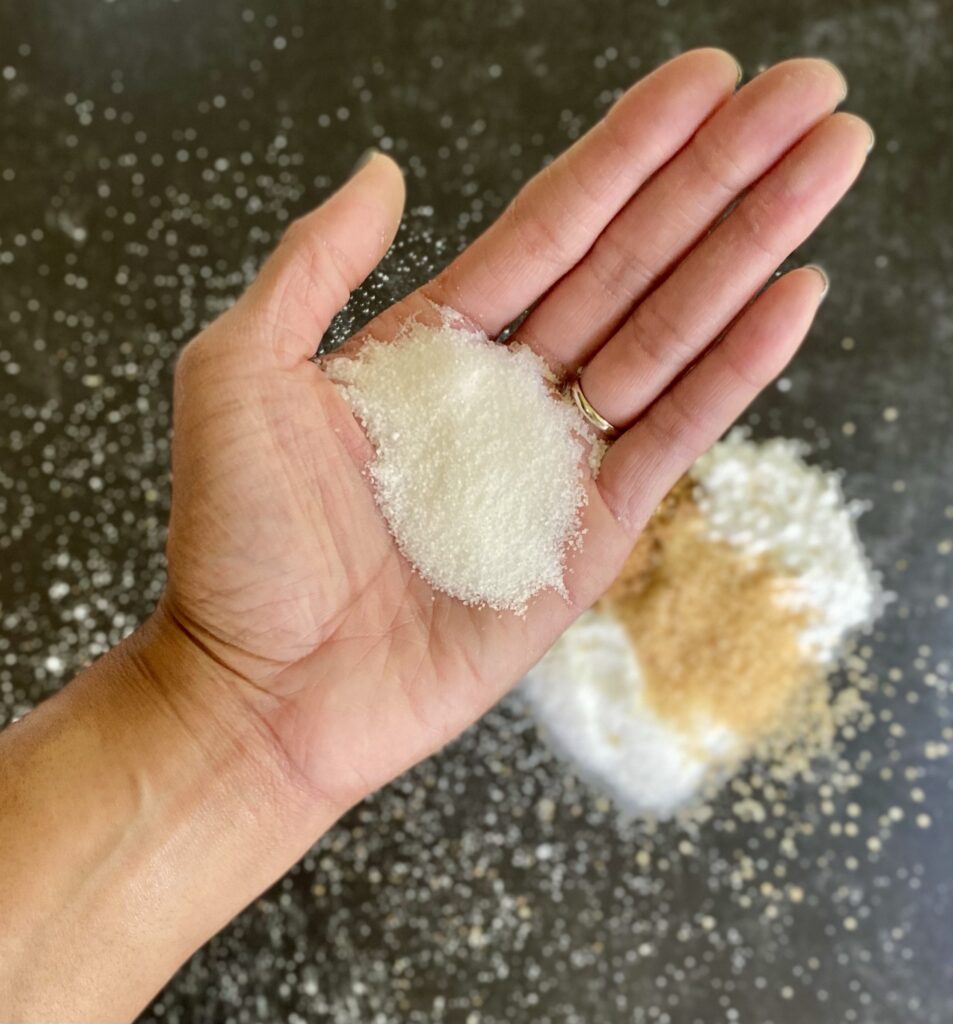
There’s also confectioner’s sugar (also known as powdered sugar or icing sugar), which is common in the United States for buttercream (frosting) and dusting.

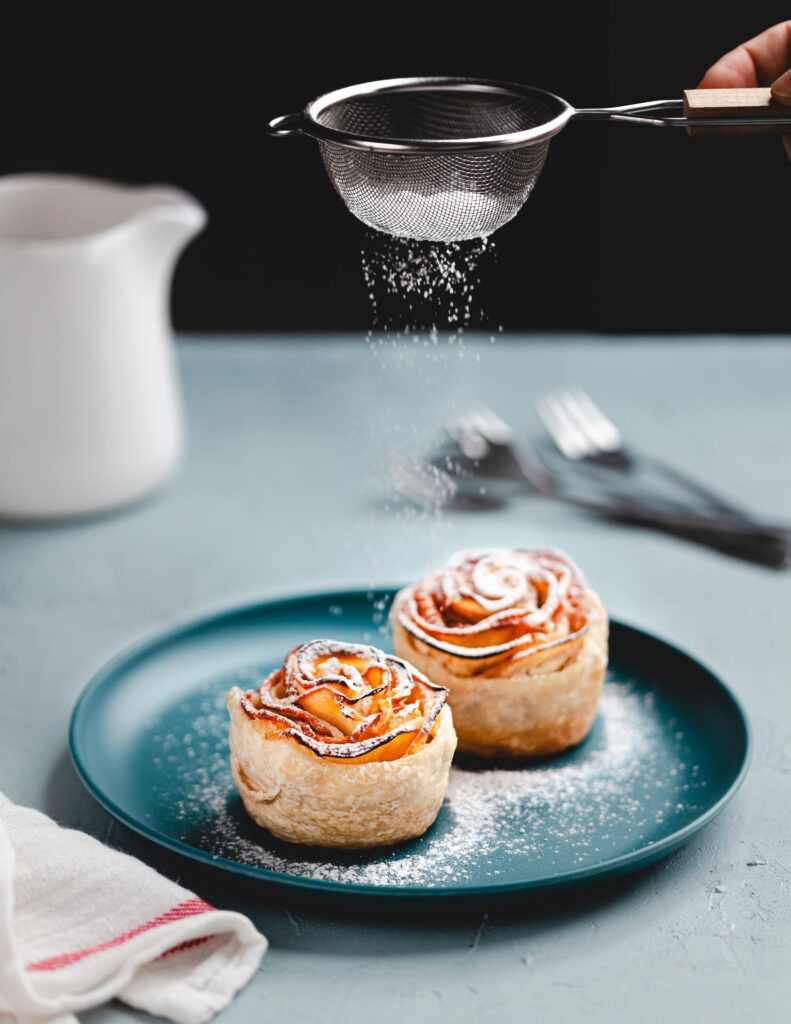
You might know that confectioner’s sugar is finer than granulated sugar and mixed with a kiss of corn starch, but did you know that there are levels of confectioner’s sugar?
I know. It’s mind blowing.
Confectioner’s sugar comes in 6x, 10x, and 12x versions. The most common form of confectioner’s sugar that’s on grocery store shelves is 10x sugar. The others can be hard to come by unless you’re a commercial baker (or you have a hookup at a restaurant supply store).
Don’t worry! For home baking, 10x sugar is perfect!
The last kind of white sugar that I keep on hand in my kitchen is sanding sugar. This is a decorating sugar that adds crunchy texture and a touch of shine to whatever you’re baking. Whether it’s extra crunch on the top of a cupcake or a finishing touch for a pie or some cookies, this sugar adds that professional-looking pop that makes your treats a treat to look at.
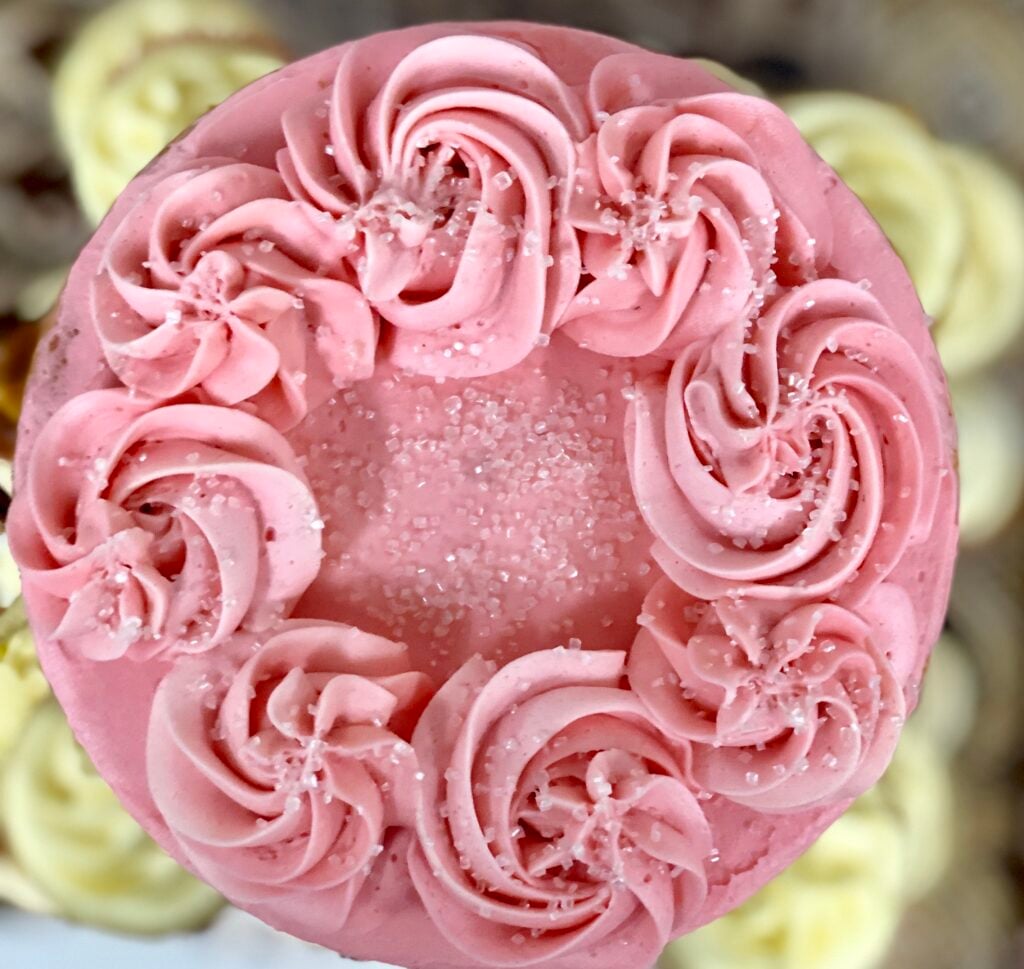
::Brown Sugars Have Entered The Chat::
My absolute favorite sugars on earth are the ones that have a bit of molasses left in them. I say “left in” because molasses is a naturally-occurring part of sugar that is stripped during the production process.
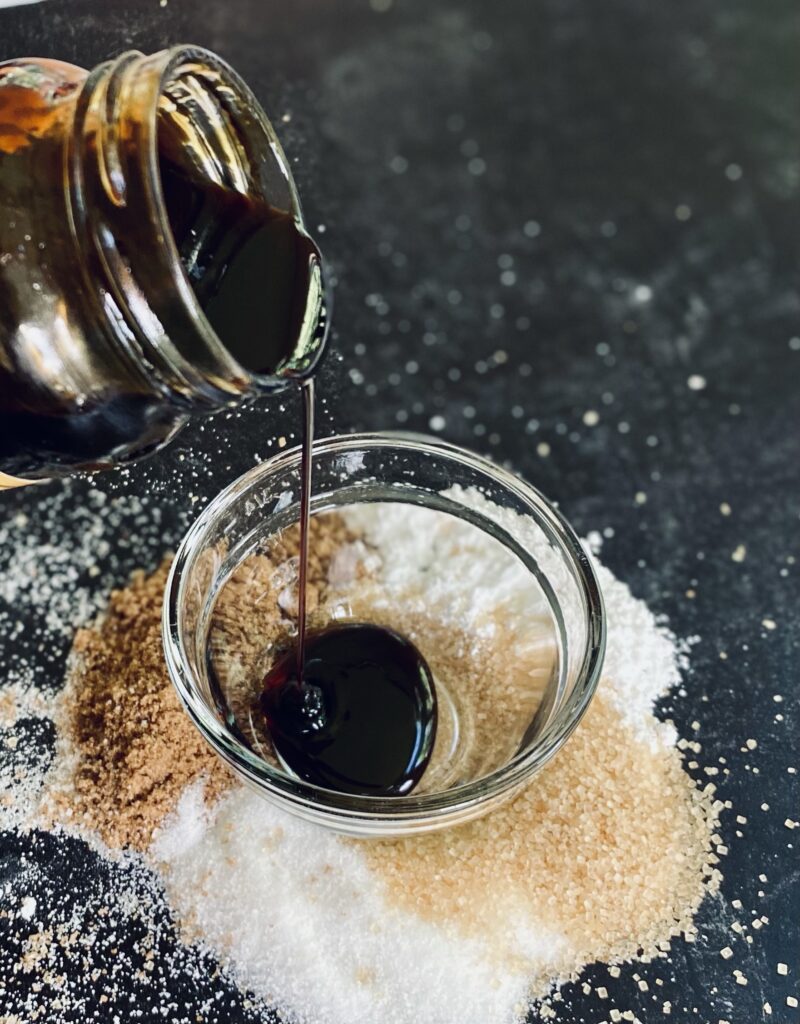
That’s right; molasses is a byproduct! For granulated sugar, it’s stripped completely from the product. For turbinado (or demerara sugar), a tiny bit of molasses remains.
For light brown sugar and dark brown sugar, the molasses is partially stripped and then added back. For muscovado sugar, it’s not stripped at all. The more molasses you find in the sugar, the higher the moisture content in your baked goods and the more rich molasses flavor you’ll get.
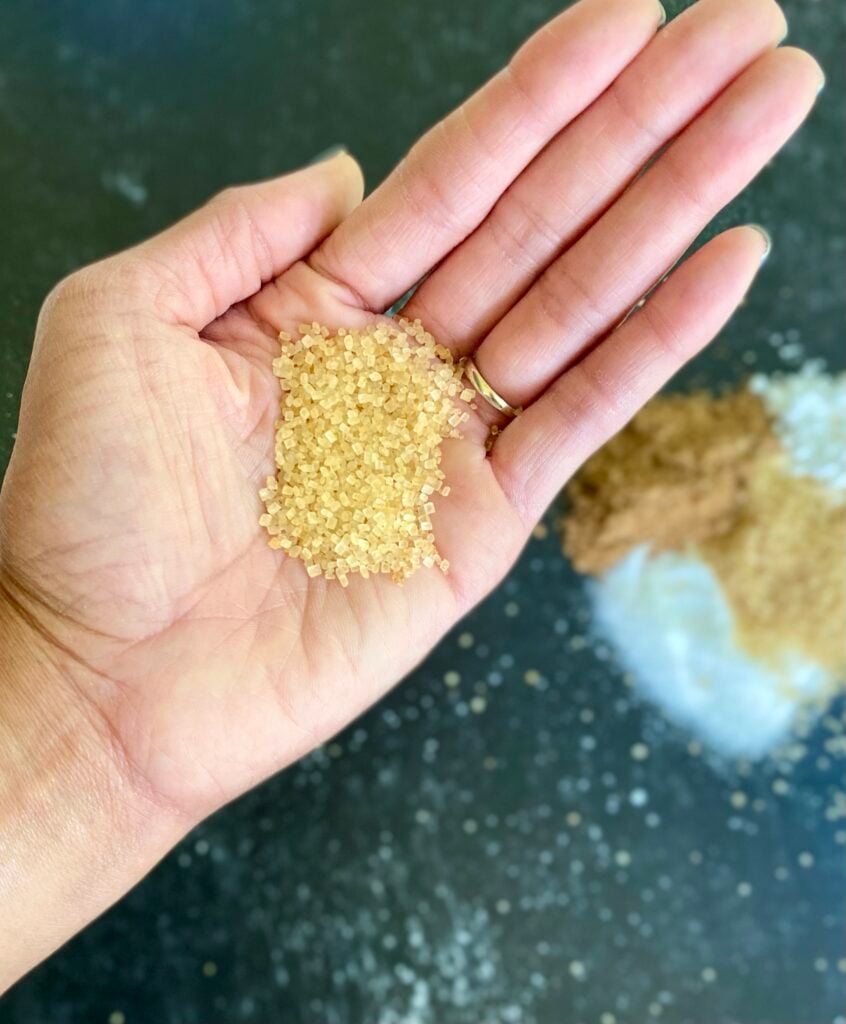
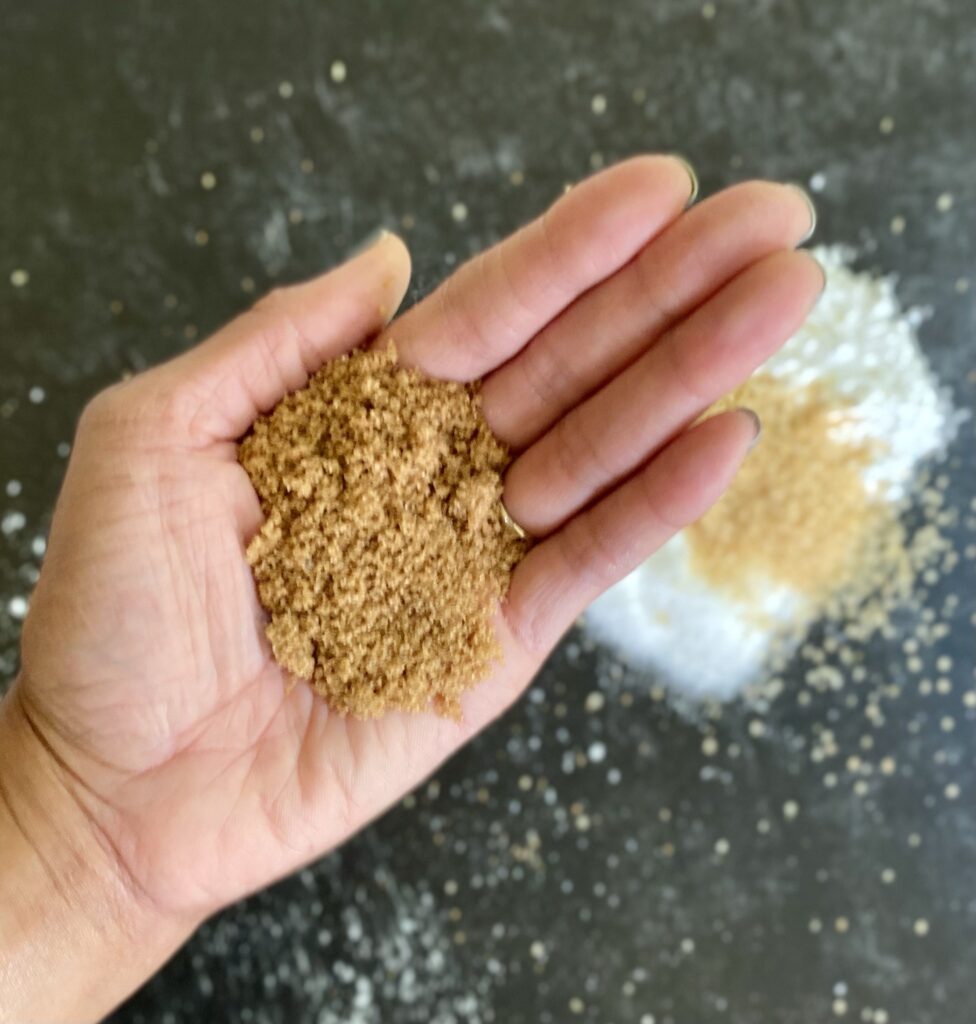
Why do I care about molasses? Molasses adds moisture to baked goods, which gives that extra chewy texture to your chocolate chip cookies and gingerbread. And, of course, there’s that rich molasses flavor…and the smell…
::blissful eye roll::
Wrap Up
Sugar impacts so much more than just the sweetness of your baked goods. As you gain confidence in the kitchen and start developing your own recipes, you’ll want to take advantage of every benefit that sugar has to offer when you create your own showstopping desserts. Now you have the know-how to do just that!
I hope you found this helpful and look forward to seeing your beautiful creations!
Epilogue: A Note About the History of Sugarcane
Sugarcane grows in the more tropical regions of the United States, South America, and the Caribbean. It requires back-breaking labor for planting, harvesting, and production.
In the antebellum world, much of this dangerous labor was performed by enslaved people under oppressive and dangerous conditions. Even after chattel slavery ended, people of African descent were disproportionately represented among sugarcane laborers.
As a black woman and a baker, the history of sugar production saddens me. I still feel a deep connection the the souls in my own family who toiled for cotton, soybeans, and tobacco in Virginia; I would never discount the experiences of those who toiled and died on sugarcane plantations for this crop by ignoring this history.
It is a present thought in my mind all the time; I can only hope that those ancestors are resting peacefully and that they are proud of the freedom we have now. I hope my choice–to live in this space and honor their recipes in a new way–makes them proud. I hope that I am making the most of the freedom that they longed for, and that I am showing honor for their sacrifice by shedding light on the truth.
????? ?? ???? ????
Until next time!
While you’re here, go ahead and subscribe so that you can be the first to get new content!

